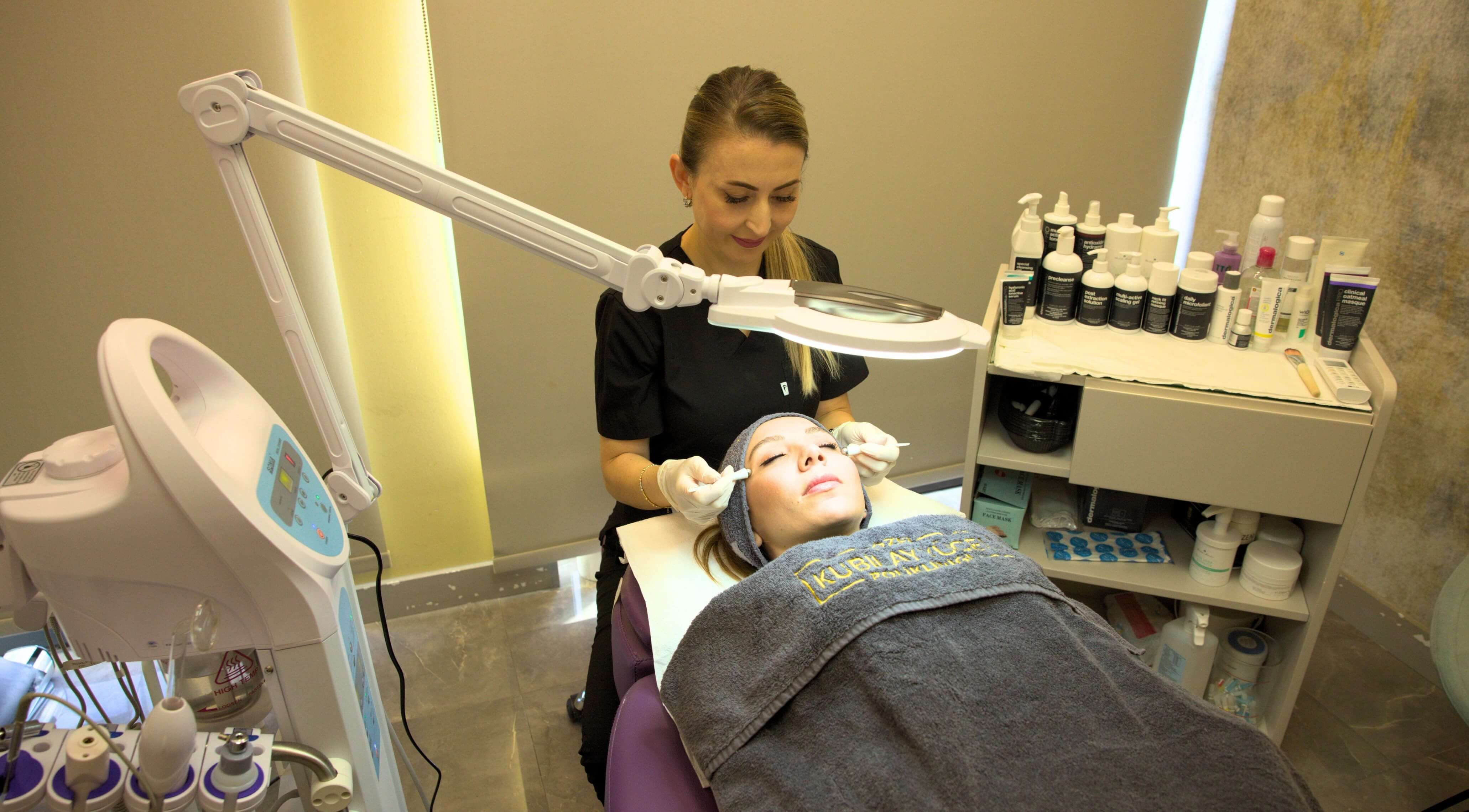Chemical peeling is a procedure that uses a special chemical solution to exfoliate the outer layer of the skin in a controlled manner. This process removes dead cells from the skin’s surface, helping to achieve a younger, smoother, and more radiant complexion. It is also effective for evening out skin tone, reducing the appearance of wrinkles, diminishing acne scars, and correcting other skin imperfections.
How Chemical Peeling Works
Chemical peeling exfoliates the upper layers of the skin in a controlled manner while stimulating the production of new cells in the lower layers. The chemical agents used:
-
Removes Dead Cells: Exfoliates the dead cells that accumulate on the surface of the skin.
-
Supports Collagen Production: Accelerates the skin’s natural renewal and collagen production.
-
Promotes a Healthy Skin Surface: Fresh, healthy cells emerging from beneath create a firmer and more youthful appearance.
Areas Treated with Chemical Peeling
-
Skin Rejuvenation: Reducing signs of aging, diminishing fine lines, and wrinkles.
-
Acne and Acne Scars: Minimizing post-acne marks and smoothing the skin texture.
-
Skin Tone Irregularities: Reducing hyperpigmentation, sunspots, and uneven skin tone.
-
Skin Roughness and Firmness: Enhancing the skin’s tightness, smoothness, and vitality.
-
Blackheads and Pores: Tightening pores to achieve a cleaner skin appearance.
- Individuals with signs of aging such as wrinkles, fine lines, or sagging skin,
- Those with acne or acne scars seeking to reduce their appearance,
- People with uneven skin tone, sun damage, or pigmentation issues,
- and anyone desiring a smoother, more youthful complexion.
- Chemical peeling can be customized with various depths and intensities to suit a wide range of skin types. However, it is essential to consult with an expert dermatologist to determine the most appropriate method.
- Quick and Effective Results: Noticeable improvements can often be seen even after a single session.
- Natural Skin Renewal: Stimulates the skin’s natural regeneration process, resulting in a radiant and revitalized appearance.
- Even Skin Tone: Helps to reduce color irregularities for a more uniform complexion.
- Various Peeling Options: Offers light, medium, and deep peeling choices tailored to individual needs.
Preparation: The skin is cleansed prior to treatment, and a topical anesthetic may be applied if needed.
Application of the Chemical Solution: The appropriate chemical solution is applied based on the skin type and desired outcome.
Exfoliation Process: Following application, the skin typically undergoes a peeling or flaking process that lasts a few days.
Recovery: Once peeling is complete, the new, fresh skin appears smoother and healthier.
When Are Results Visible?
- Light Peeling: Increased radiance and vitality are noticeable within 3-5 days.
- Medium Depth Peeling: Visible improvement and color balance occur in approximately 1-2 weeks.
- Deep Peeling: Comprehensive changes and renewal are typically observed within 1-3 months.
- Sun Protection: Protect the sensitive skin after peeling with broad-spectrum sunscreen.
- Moisturization: Use appropriate moisturizers during recovery and avoid disrupting the peeling process.
- Patience and Care: As the peeling process varies by individual, following aftercare instructions is key for optimal results.
Chemical peeling is an effective, non-surgical method for skin rejuvenation. By stimulating the skin’s natural renewal process, it helps you achieve a smoother, more even, and radiant complexion. Since every individual's skin is unique, consulting with an expert dermatologist is essential to create the best personalized treatment plan.

